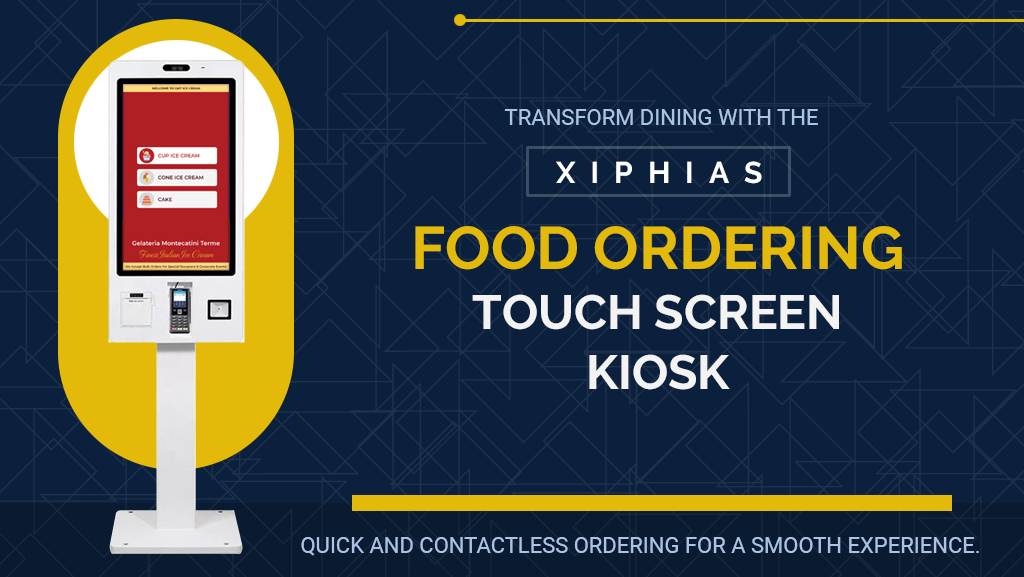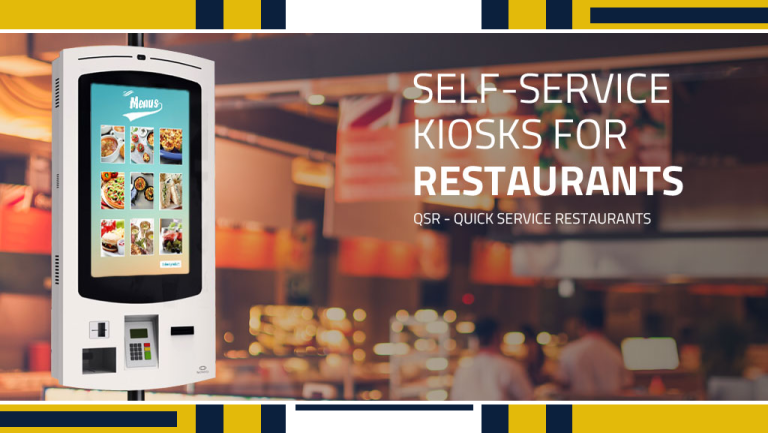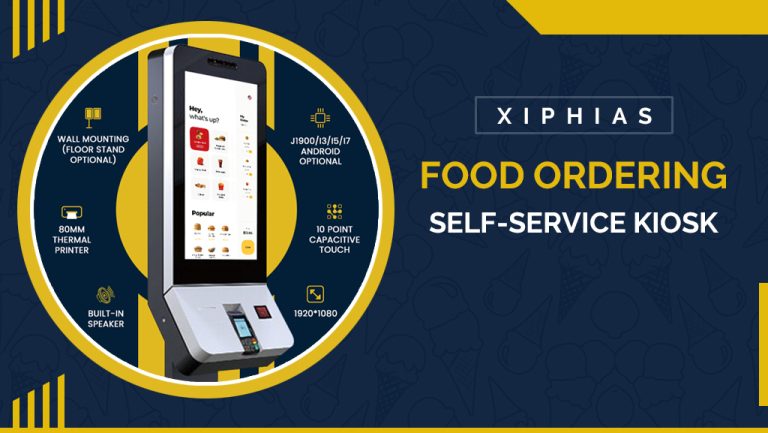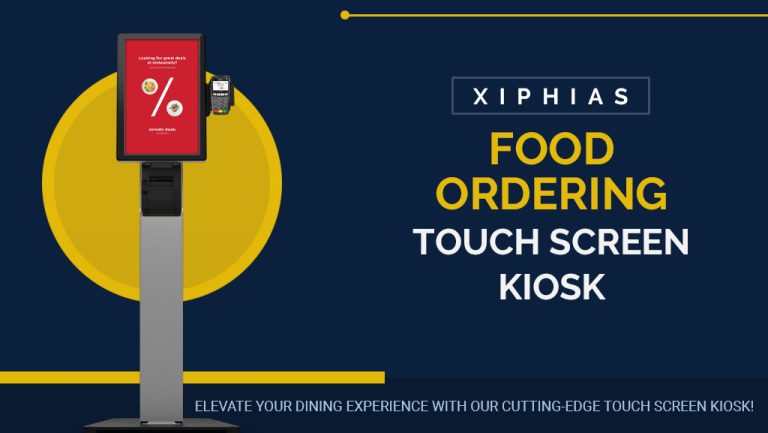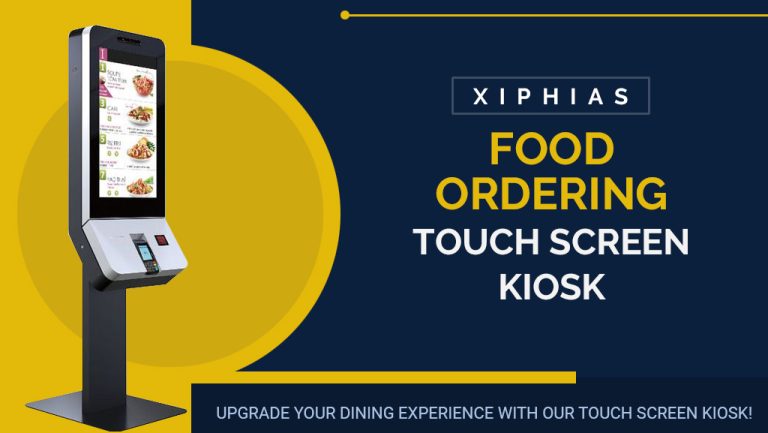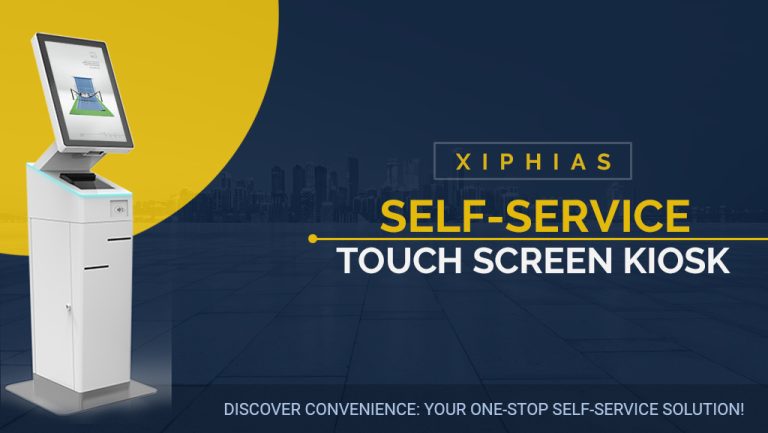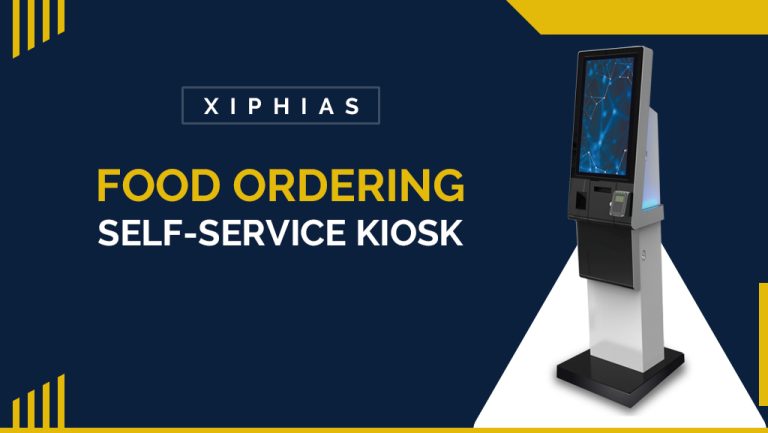The Advantages of Using Food Ordering Kiosks in High-Traffic Restaurants
As high-traffic restaurants grow more popular, the pressure on businesses to deliver fast, accurate, and efficient service increases. With long lines, bustling dining areas, and the demand for rapid service, restaurants need to adopt modern solutions to improve customer experience and streamline operations. One such solution that is transforming the food service industry is the implementation of food ordering kiosks.
These self-service kiosks allow customers to place orders and make payments without interacting with staff, providing a convenient and efficient alternative to traditional ordering methods. Below, we’ll explore the various advantages of food ordering kiosks and why they’re an excellent choice for high-traffic restaurants.
1. Faster Service During Peak Hours
One of the biggest challenges faced by high-traffic restaurants is the ability to serve customers quickly, especially during peak hours. Long queues and wait times often result in frustration and lost business. Food ordering kiosks are designed to reduce these wait times by allowing multiple customers to place orders simultaneously. This enables the restaurant to serve more customers in less time, keeping lines moving and ensuring a quicker turnover.
With the self-service aspect of kiosks, customers can place their orders at their own pace without having to wait for a cashier to become available. This greatly enhances service speed, particularly during busy lunch or dinner rushes, helping restaurants accommodate a higher volume of customers without sacrificing quality.
2. Reduced Labor Costs
Implementing food ordering kiosks in high-traffic restaurants can lead to significant reductions in labor costs. By automating the ordering process, fewer cashiers are needed to take orders, allowing restaurants to allocate staff to other areas, such as food preparation or customer service. This reduces the need for additional hires, saving on wages, benefits, and training costs.
While kiosks do not eliminate the need for staff, they do allow for better workforce management, especially during peak times. Employees can focus on more critical tasks, such as expediting food delivery or maintaining cleanliness in the dining area, ensuring a smoother overall operation.
3. Improved Order Accuracy
Human error is a common issue in high-traffic restaurants where cashiers may mishear or misunderstand orders due to time constraints. Incorrect orders lead to customer dissatisfaction, food waste, and increased operational costs.
Food ordering kiosks reduce this risk by allowing customers to input their orders directly. Customers can review their choices, customize their meals, and confirm everything is correct before submitting the order. This reduces errors and ensures orders are prepared exactly to the customer’s specifications, leading to higher satisfaction rates and fewer costly mistakes in the kitchen.
4. Increased Sales Through Upselling
Food ordering kiosks are a powerful tool for increasing sales through upselling. Unlike human employees, who may forget to offer add-ons or hesitate to suggest upgrades, kiosks are programmed to consistently offer upsell opportunities. For example, when a customer orders a burger, the kiosk may prompt them to add fries or a drink or upgrade to a combo meal.
These automated upselling features can lead to higher average ticket values, as customers are more likely to accept suggestions presented by the kiosk. High-traffic restaurants benefit significantly from this consistent upselling, as it helps maximize revenue without needing additional staff intervention.
5. Enhanced Customer Experience
In a high-traffic restaurant, customers value convenience and speed. Food ordering kiosks offer a modern, intuitive interface that allows customers to quickly browse the menu, customize their orders, and complete transactions without the need for human assistance. The self-service aspect empowers customers to control their dining experience, leading to greater satisfaction.
In addition, kiosks often offer multi-language support, catering to a diverse customer base and ensuring that non-native speakers can easily place their orders. Furthermore, the ability to review the order before confirming reduces the anxiety of making mistakes, providing a stress-free and pleasant experience for customers.
6. Contactless Ordering for Enhanced Safety
In a post-pandemic world, hygiene and safety have become top priorities for both restaurants and customers. Food ordering kiosks offer a contactless solution, minimizing physical interaction between customers and staff. Customers can place orders and pay using touchless payment methods such as mobile wallets or credit cards, reducing the need to handle cash or come into close contact with others.
This added layer of safety reassures customers and makes dining out more appealing, particularly in high-traffic environments where large groups of people gather.
7. Customizable Menus for Greater Flexibility
Food ordering kiosks offer restaurants the flexibility to easily update and customize their menus. Unlike traditional printed menus, which can be costly and time-consuming to update, kiosks allow for instant digital changes. Restaurants can introduce new items, adjust prices, or run limited-time promotions with just a few clicks.
In addition, kiosks offer customers the ability to personalize their meals by selecting toppings, sides, and portion sizes. This flexibility enhances the customer experience, as diners can create meals that suit their preferences, dietary restrictions, or cravings. High-traffic restaurants benefit from this ability to offer tailored options, making the dining experience more enjoyable for a diverse range of customers.
8. Efficient Data Collection and Analytics
One of the most valuable advantages of food ordering kiosks is the data collection they offer. Restaurants can track and analyze customer behavior, including popular menu items, ordering times, and average spending per customer. This data provides crucial insights into customer preferences, allowing restaurants to make informed decisions about their menu, promotions, and pricing strategies.
For example, if a particular menu item is consistently popular, the restaurant may choose to highlight it more prominently or offer related promotions. Understanding peak ordering times also helps management optimize staffing levels and ensure efficient service during busy hours. With data-driven insights, high-traffic restaurants can improve operations and better meet customer demands.
9. Consistency Across Locations
For restaurant chains or franchises with multiple locations, consistency is essential to maintaining brand integrity. Food ordering kiosks provide a standardized ordering experience across all locations, ensuring that customers receive the same level of service and menu offerings no matter where they dine.
The kiosks can be centrally managed, allowing updates to be rolled out simultaneously across multiple locations. This ensures that promotions, pricing changes, and menu updates are consistent and accurate across the board, helping maintain a unified brand experience for all customers.
10. Sustainability and Eco-Friendly Operations
In addition to the operational advantages, food ordering kiosks contribute to a restaurant’s sustainability efforts. By reducing the need for printed menus, receipts, and promotional materials, kiosks help minimize paper waste. Customers can receive digital receipts via email or text, further cutting down on the environmental impact.
High-traffic restaurants, which often generate significant waste from paper menus and receipts, can significantly reduce their ecological footprint by transitioning to digital solutions. This commitment to sustainability not only benefits the environment but also appeals to eco-conscious consumers who prefer supporting businesses that prioritize green practices.

